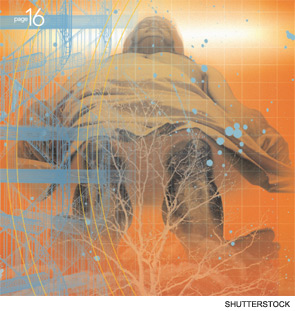
The advent of sensitive molecular techniques has revealed aspects of human biology that challenge the imagination and encourage speculation about the mechanisms of disease—and microchimerism is among the most striking of these aspects. Microchimerism refers to the presence in a person or animal of a small number of cells or DNA from a genetically different individual. While unanticipated by conventional thinking, microchimerism is not an anomaly of nature. Despite beliefs on individualism and inimitability, microchimerism appears to be a part of normal biology. As now recognized, during pregnancy microchimerism occurs naturally with the exchange of cells and cell-free DNA between a mother and fetus. After birth, maternal microchimerism (MMc) is found in neonates, children, and adults. In women with prior pregnancies, fetal microchimerism (FMc) is present years later.
This remarkable situation has been investigated only recently. The extent of both short-term and long-term effects—during pregnancy and years later—are not yet known. Even a conceptual framework has not yet evolved to understand how the individual maintains health with cells of disparate origins. In this new investigative frontier, studies in rheumatologic and autoimmune diseases, including RA, systemic sclerosis, neonatal and systemic lupus, and myositis, are leading the way and generating insights with the potential for direct application from bench to bedside. This review will cover the current field of microchimerism, considering the chimeric self throughout a lifetime, in health, or when afflicted by disease.
Pregnancy Presented Initial Research Opportunities
The placenta has usually been considered a staunch barricade to keep the mother and fetus apart and prevent maternal rejection of the genetically disparate fetus. Interestingly, some earlier literature suggested otherwise, but did not gain wide acceptance.1 With the application of sensitive molecular techniques, it has become clear that maternal–fetal trafficking is in fact common. Lo and colleagues reported FMc in 100% of pregnant women and MMc in 30% of cord blood specimens.2 In these studies, testing for chimeric DNA in plasma employed sensitive quantitative PCR techniques.
More than 60 years ago, P.S. Hench observed that RA usually improves during pregnancy and recurs after delivery.3 Hench’s investigations led to the discovery of cortisol, for which he shared the Nobel Prize in 1950. Despite the tremendous importance of this discovery, subsequent work indicated that increased cortisol levels did not explain pregnancy-induced RA amelioration. Later, an immunologic explanation was proposed. According to this model, the exposure of a mother to the genetically differing fetus induces the change in maternal disease activity. As an indirect test of the hypothesis, mother–child pairs were studied for human leukocyte antigens (HLA); these studies showed that a significantly greater likelihood of RA amelioration occurred when the child was HLA class II disparate from the mother.4

